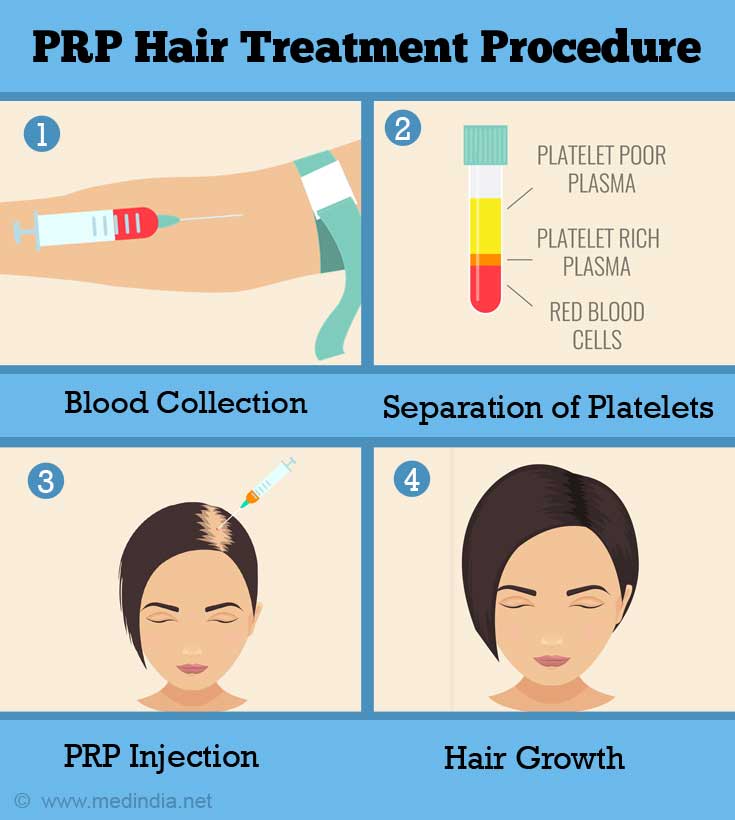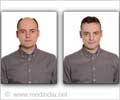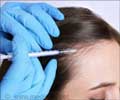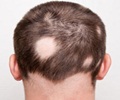- Platelet-Rich Plasma in Androgenic Alopecia: Myth or an Effective Tool - (https://www.ncbi.nlm.nih.gov/pmc/articles/PMC4134641/)
- The Effect of Platelet-Rich Plasma in Hair Regrowth: A Randomized Placebo-Controlled Trial - (https://www.ncbi.nlm.nih.gov/pmc/articles/PMC4622412/)
- Current clinical applications of platelet-rich plasma in various gynecological disorders: An appraisal of theory and practice - (https://www.ncbi.nlm.nih.gov/pmc/articles/PMC6030616/?report=classic)
- Platelet-rich plasma (PRP) in dental and oral surgery: from the wound healing to bone regeneration - (https://www.ncbi.nlm.nih.gov/pmc/articles/PMC3683340/)
- Role of platelet-rich plasma in ischemic heart disease: An update on the latest evidence - (https://www.ncbi.nlm.nih.gov/pmc/articles/PMC4620078/)
- Stem-cell therapy and platelet-rich plasma in regenerative medicines: A review on pros and cons of the technologies - (https://www.ncbi.nlm.nih.gov/pmc/articles/PMC6306612/)
What is Platelet-Rich Plasma (PRP) Therapy?
Platelet-rich plasma (PRP) therapy has emerged as a new treatment modality, which plays a beneficial role in hair re-growth.
PRP therapy is a medical treatment where a person's blood is drawn, processed and then injected into the scalp. The blood drawn is centrifuged, where it separates the platelet-poor plasma, platelet-rich plasma and red blood cells.
The platelet-rich plasma is injected into the scalp, where the platelets release numerous growth factors. These growth factors act on the bulge area of the follicles and stimulate the growth of new hair follicles. They also promote the formation of new blood vessels in the scalp area to boost the supply of oxygen and nutrient-rich blood towards the scalp in order to promote hair growth.
What is the Procedure of PRP Therapy for Hair?
Platelet-rich plasma (PRP) therapy is a four-step procedure. The steps are as follows:
Step 1:
The doctor will first discuss all the details related to your health like:
- Your family history
- Diet and nutrition
- Medications and supplements you take
- Hair care regimen - like which hair products you use and how often
- Medical history and recent surgeries
- History of hair loss
A general physical examination is performed at the start of the therapy, where you need to undergo blood tests and scalp biopsy to decide your eligibility for PRP hair therapy. Once everything is normal and taken care of, your doctor will explain to you the procedure and the guidelines.
Step 2:
Approximately 30 or 60 ml of blood will be drawn up into a syringe typically from your arm. The amount of blood depends upon the size of the area to be treated.
Step 3:
The blood is then spun in a centrifuge, a machine where the blood is separated into three layers:
- Platelet-poor plasma
- Platelet-rich plasma
- Red blood cells
Step 4:
About 8-12 ml of platelet-rich plasma is drawn into the syringe and injected into the scalp areas to promote hair growth. Before injecting the plasma, your scalp area is anesthetized and a disinfectant is applied.

What are the Benefits of PRP Therapy?
Platelet-rich plasma (PRP) therapy is becoming increasingly popular and can benefit all patients with thinning hair. The benefits of PRP therapy include:
- Hair Restoration: As mentioned earlier, PRP therapy is an effective treatment for restoring hair. Hence, individuals with
baldness or hair loss problems can opt for this treatment. - Skin Rejuvenation: This therapy has also been used successfully to fight signs of skin aging like wrinkles, dark spots, scars and dark circles under the eyes. It is also referred to as a liquid
facelift procedure. - Promotes Healing: Studies have found that PRP therapy is widely used in orthopedic and sports medicine to relieve pain. It promotes healing of musculoskeletal diseases such as tendonitis, ligament sprains, arthritis and tears. Scientific research has further indicated that
PRP injections have been used for athletic injuries , which result in quick healing, pain relief and a rapid return to regular activities. PRP therapy delivers platelet to the injured area and helps in healing tissue injury. - Improves Dental Health: Research has observed that PRP therapy is a valuable adjunct to promote healing in many procedures in dental and oral surgery. It is effectively used in:
- Ablative surgical procedures
- Surgical repair of alveolar cleft
- Mandibular reconstruction
PRP has an adhesive nature, which promotes easier handling of the graft material that improves flap adaptation and homeostasis. This therapy is an excellent treatment option for aging patients undergoing dental surgeries.
- Supports Heart Health: Death of the cardiac cells affects the functioning of the heart. PRP therapy releases growth factors that trigger healing and help in the formation of new blood vessels. These blood vessels supply nutrient and oxygen-rich blood to the heart, which enhances organ regeneration. It also repairs damaged tissue and restores blood flow by significantly increasing the number of capillaries and blood vessels, says research.
Final Verdict
Huge merit of the use of PRP for therapeutic application is the immediate preparation of PRP. It does not require any preservation facilities and it can be used quickly.
This therapy is considered safe and natural, as it involves the use of the person’s own cells without any further modification. Because of this, no immune response is elicited.
Furthermore, studies have noted that as the preparations are from the same person, the chances of getting
What are the Disadvantages of PRP Therapy?
Research has indicated that the use of PRP therapy does not possess major demerits. However, PRP applications may lead to injection-site morbidity, infection or injury to blood vessels and nerves. It may also lead to scars and calcification at the site of injection. It has also been reported that some patients have experienced pain and soreness at the site of injection and also in deeper areas such as muscles and bones.
PRP therapy may not be completely suitable for patients with a weak or compromised immune system. The risk of infection in the injured area is higher in such patients. Few studies have reported allergic reactions among individuals who have taken PRP-enriched fractions. The chances of damaging the artery or veins may result in blood clot because PRP is given intravenously.
Individuals with the following lifestyle habits and diseases are not advised to opt for PRP therapy as it may lead to complications, these include:
- Individuals with a history of heavy smoking, alcohol and drug use
- Patients with platelet dysfunction syndromes
Sepsis - Chronic liver disease
Thrombocytopenia (Low platelet level) - Acute and chronic infections
- Chronic skin diseases
- Cancer
- Systemic disorders
What are the Side-Effects of PRP Therapy?
Platelet-rich plasma (PRP) therapy has no adverse reactions because a person's own blood is injected into the scalp. However, due to injections, the person may experience pain, soreness, tenderness, irritation or bleeding at the site of injection.
Injections may also cause injury to the nerves and blood vessels present in the scalp.

How Much Does PRP For Hair Cost?
The cost of each session depends upon the treatment (hair growth, hair length and thickness). The cost may vary between Rs. 5000 to Rs. 30,000.
If you’re experiencing hair fall, consult your doctor as soon as possible. There are plenty of











